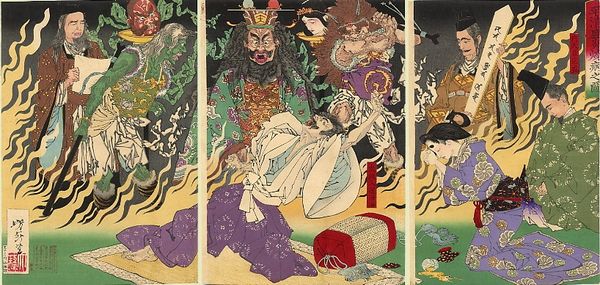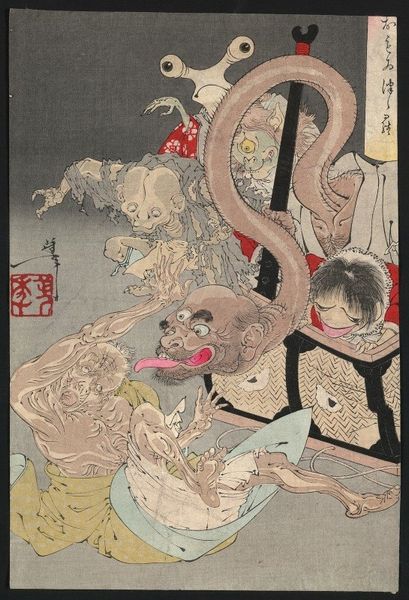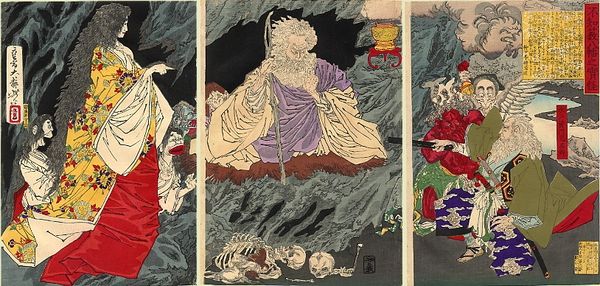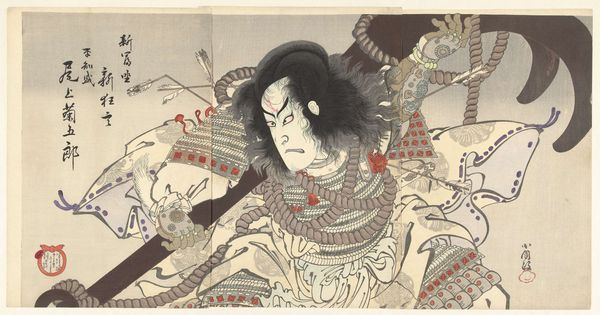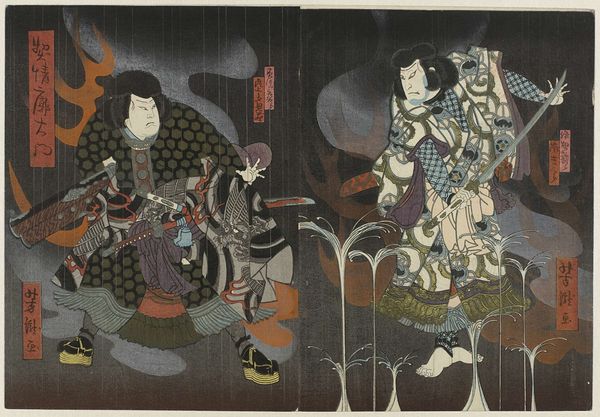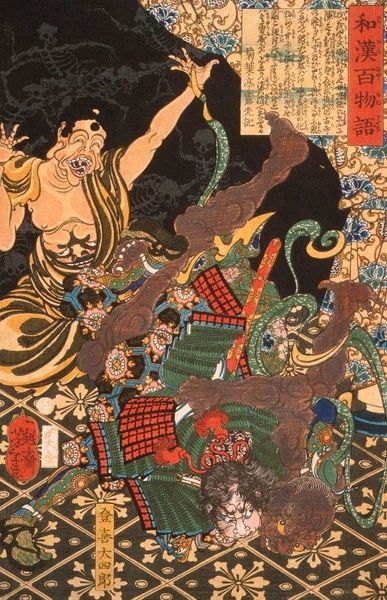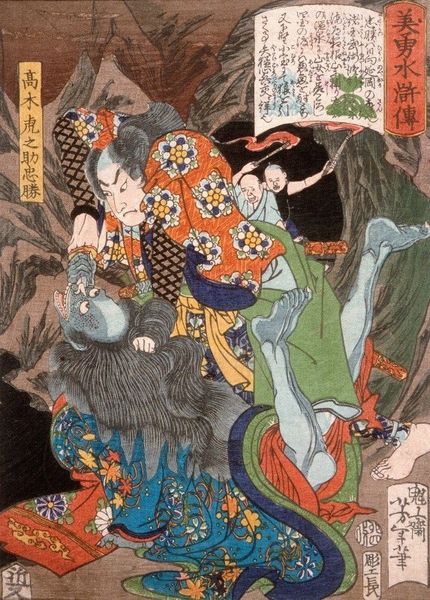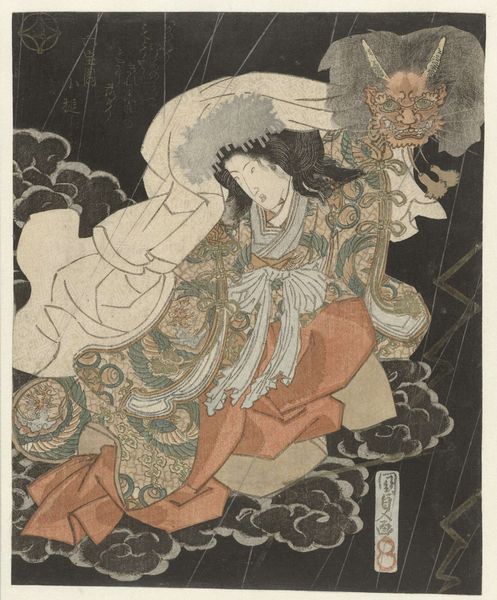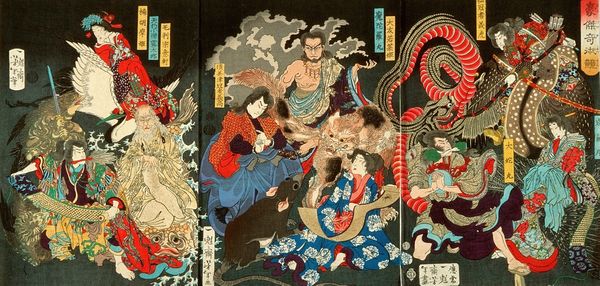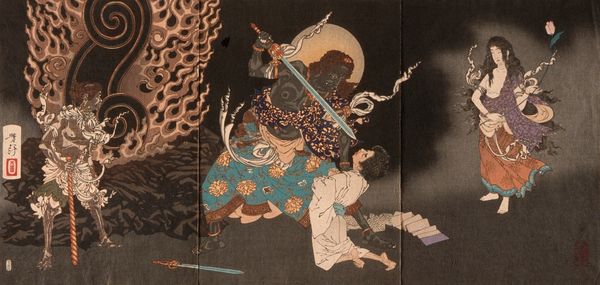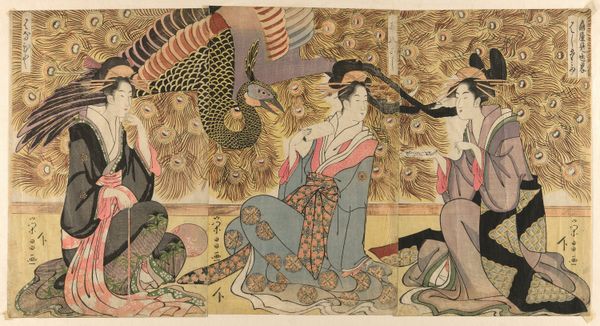
Copyright: Public Domain: Artvee
Tsukioka Yoshitoshi created this woodblock print, titled "The Fever of Taira no Kiyomori," in Japan. The image depicts Kiyomori, a powerful 12th-century warlord, writhing in agony, surrounded by ghostly figures emerging from flames. Yoshitoshi made this print during the Meiji period, a time of rapid modernization and social upheaval as Japan opened up to the West. We see Kiyomori, a historical figure known for his ruthlessness and ambition, haunted by the spirits of his enemies, suggesting a commentary on power, karma, and the consequences of one's actions. The artwork can be interpreted as a critique of unchecked authority and a reflection on the moral complexities of leadership. To truly understand this piece, one needs to consider the rich tapestry of Japanese folklore, religious beliefs, and political history. Historical texts and biographies of Kiyomori, alongside studies of Meiji-era art and culture, can offer valuable insights into the social and institutional forces that shaped this image. Remember, the meaning of art is always contingent on its context.
Comments
No comments
Be the first to comment and join the conversation on the ultimate creative platform.
